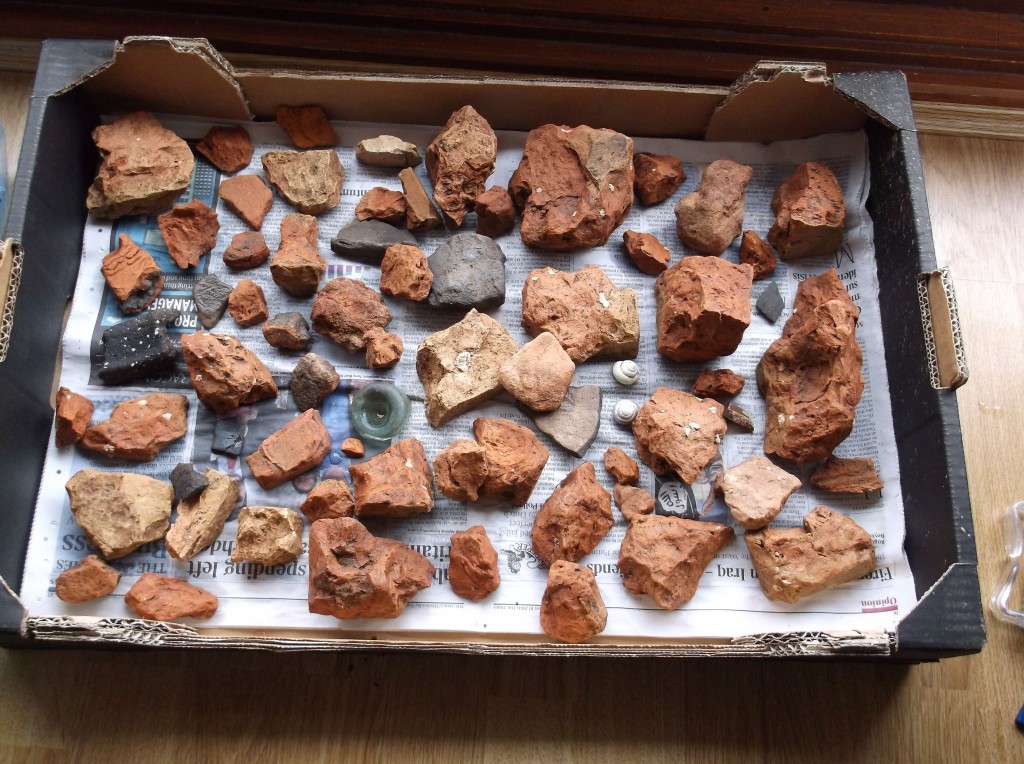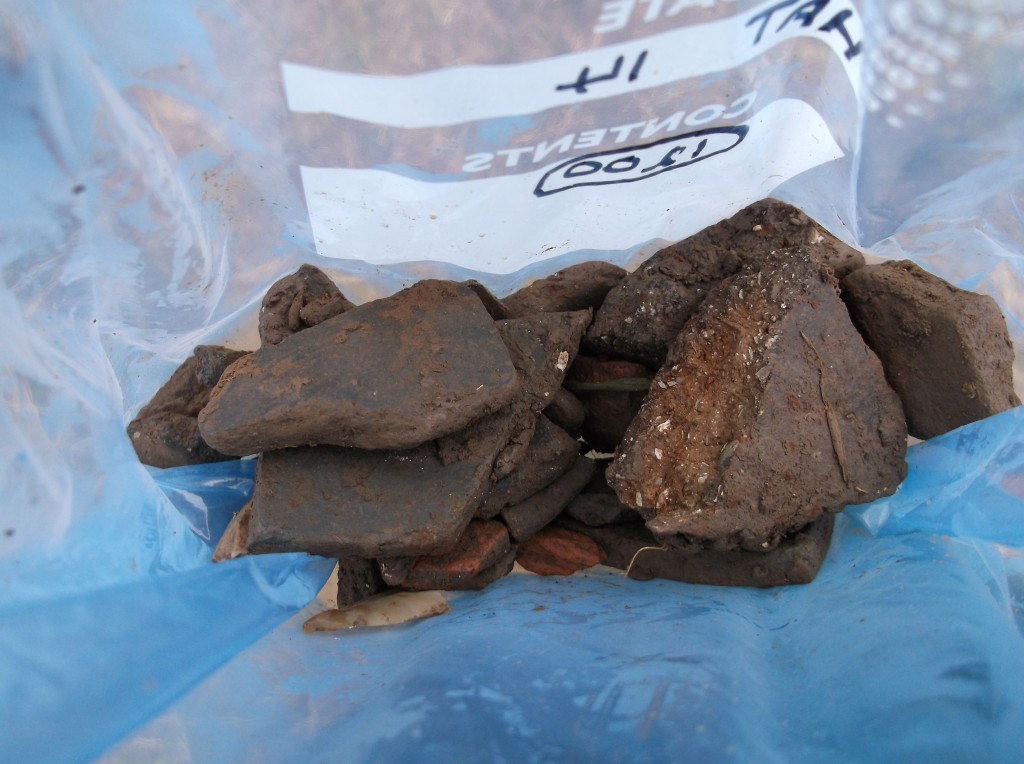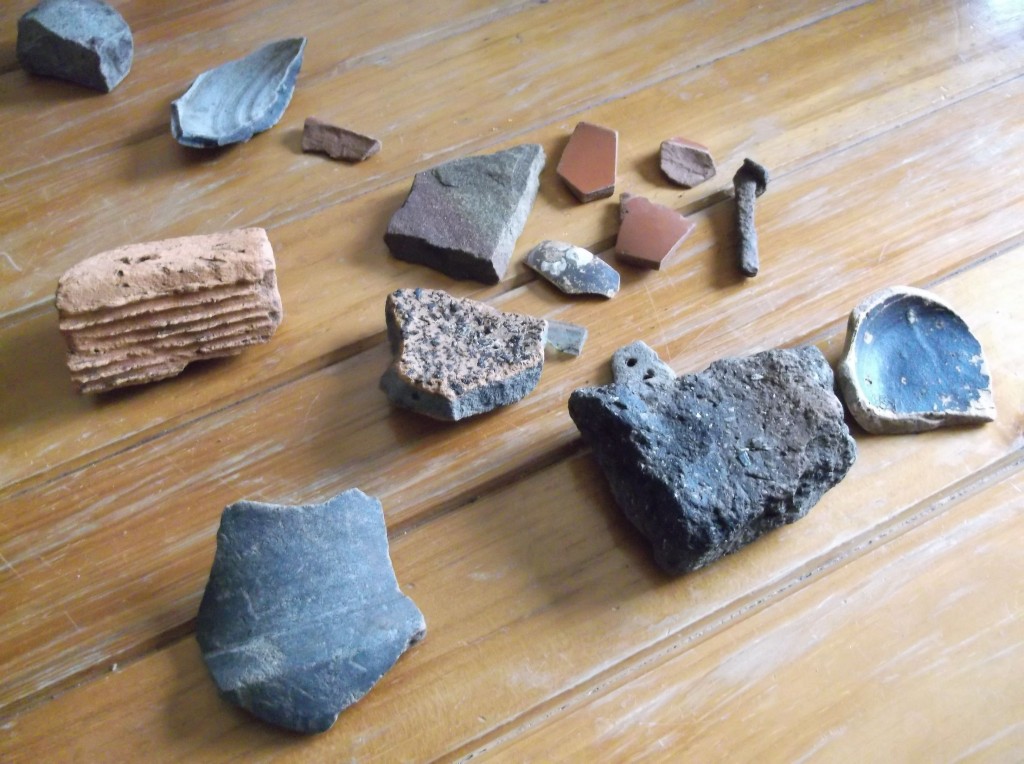Feed URL: https://blogs.kent.ac.uk/digthewolds/2014/09/15/15914-artefact-facts/feed/?withoutcomments=1
“Rim!” “Greyware!” “Boxflue!”
Those are the calls of our undergraduate team across the site as we search for surface finds. But how can we judge what they are just by sight without dating methods? Of course, part of it comes with practice, but categorisation of types of materials can help us to narrow down what we find straight away.
When gathering finds from surface surveying, we typically keep them in a container which is labelled with the site’s grid reference (we base ours on a map we created earlier for the site) for their respective origin. As long as they are kept within this organisation system, we can track down their precise location on the site for later reference!
A similar organisation system is in place when we come across finds while excavating. Rather than noting only the square area in which an item was found, we also record its context – the layer of soil in which the find lay. Whether an item is in ploughsoil, clay, or within a deeper feature of the earth is important in judging that item’s time period or situation of origin!
Finds are usually washed, as we cannot always clear the soil from them on the field itself – especially when the rainy weather turns all the dust to mud. This helps details to come to light, such as if an artefact has a painted decoration, or if an item’s nature was uncertain. Sadly we are still learning that vital difference between red chalk and terracotta…

Cleaned potsherds and fragments. The only time it’s acceptable to have your crockery in pieces in the sink
Our team of undergraduates have also had a little crash-course in different types of finds. The Binbrook site is very rich in Roman building roof-tiles, grey/black ceramics (greyware), and a range of red ceramics. These all came in various shapes and sizes:
- sherds – This refers specifically to broken pieces of ceramics such as pots and bowls.
- fragments – Pieces of CBM (ceramic building materials) are referred to as fragments. CBM includes roof tiles, floor tiles, bricks and boxflue (Roman central heating system) tiles.
- tesserae – Plural of tessera, a single tile used in mosaics. Frequent in sites of Roman settlement!
- shards – While this is a little more of an Americanisation, we differentiate between sherds of ceramics and shards of glass found on the site… Although the glass we find is often much more modern than late Roman!
In addition, ceramic housewares can be categorised as finewares, thinner and more brightly-coloured ceramics used for table service such as cups and bowls; coarsewares, typically coloured differently to finewares and used for food preparation; and amphoras, which are storage containers. Most of our finds have been coarsewares, with the occasional beautiful specimen of fineware. All three have great variation between types of clay, colour and shape, but cup or bowl bases, rims and lips have fairly typical shapes that have a tendency to remain intact in comparison to shattered potsherds!
In the picture above we are treated to a fragment of boxflue tile (far left); a greyware base (far right); Samian potsherds (centre); and a Roman squared iron nail (top right). This is just a snippet of the kinds of artefacts revealing themselves over the course of this project and over two different sites, and ever more are surfacing daily now that we are in the excavation phase!


